In the ever-evolving landscape of technology, understanding the mobile app development process is crucial for both budding entrepreneurs and seasoned developers. The journey begins with the ideation phase, where the concept is born. This initial step involves identifying the target audience and defining the problem your app will solve. Conducting thorough market research can help in refining your idea and ensuring there’s a demand for your app.
Once the idea is solidified, the next step is planning and strategy. This phase includes drafting a detailed project plan, outlining the app’s features, and establishing a timeline and budget. It is essential to prioritize features based on user needs and market demands to ensure a successful launch.
The development phase follows, which can be broken down into design, coding, and testing. The design phase focuses on creating an intuitive user interface (UI) and an exceptional user experience (UX). Meanwhile, coding brings the app to life, involving front-end and back-end development. Rigorous testing is imperative to identify and fix bugs before the app is launched.
Finally, the launch phase involves deploying the app on relevant platforms and implementing user acquisition strategies. This is where effective marketing plays a pivotal role, ensuring that your app reaches its target audience. To navigate these complexities confidently, consider seeking professional advice.
Book A Consultation Now! Schedule your session today!
Defining Your Mobile App Idea and Goals

Defining your mobile app idea and goals is a critical step that sets the foundation for the entire development process. This phase requires a deep understanding of the market landscape, as well as the needs and preferences of your target audience. Begin by brainstorming potential ideas, focusing on solving specific problems or enhancing user experiences. Engage in discussions with potential users to gather insights that can help shape your concept.
Once you have a list of ideas, prioritize them based on feasibility, market demand, and your unique value proposition. It’s essential to identify what sets your app apart from existing solutions. Ask yourself questions like:
- What problem does my app solve?
- Who are my competitors, and what are their strengths and weaknesses?
- What specific features will attract users?
After solidifying your idea, it’s time to set clear, measurable goals. These goals should include short-term objectives, such as completing the development phase, and long-term aspirations, like achieving a specific number of downloads or user engagement levels. Setting SMART (Specific, Measurable, Achievable, Relevant, Time-bound) goals will help guide your project and keep you focused.
Lastly, document your app’s vision, goals, and core features in a concise format. This documentation will serve as a reference point throughout the development process, ensuring that you remain aligned with your initial concept and objectives.
Choosing the Right Mobile App Development Approach
Choosing the right mobile app development approach is crucial to the success of your project. With various methodologies available, it’s essential to understand the pros and cons of each to make an informed decision. The primary development approaches include native, hybrid, and web applications.
Native Development: This approach involves building apps specifically for one platform, such as iOS or Android, using platform-specific languages like Swift or Kotlin. Native apps offer superior performance, enhanced user experience, and access to device features, making them ideal for applications that require high functionality and responsiveness. However, the downside is higher development costs and longer timelines due to the need for separate codebases for each platform.
Hybrid Development: Hybrid apps combine elements of both native and web applications. They are built using web technologies like HTML, CSS, and JavaScript and run within a native container. This approach allows for faster development and a single codebase for multiple platforms. However, the performance may not match that of fully native apps, which can be a concern for resource-intensive applications.
Web Applications: These are responsive websites that adapt to different screen sizes. They are accessible via web browsers and do not require installation from app stores. While web apps are easier and more cost-effective to develop, they lack offline functionality and access to device features, which can limit user engagement.
Ultimately, the choice of development approach should align with your app’s goals, budget, and target audience. Consider factors such as performance requirements, user experience, and long-term maintenance costs when making your decision.
Designing an Engaging User Experience

Designing an engaging user experience (UX) is vital for the success of any mobile application. A well-thought-out UX not only attracts users but also retains them, encouraging frequent interactions and positive reviews. The following key principles can help you create a compelling user experience:
- Simplicity: The design should be intuitive and straightforward. Users should be able to navigate through the app effortlessly, with clear calls to action and minimal distractions.
- Consistency: Maintain a consistent design language throughout the app, including colors, fonts, and button styles. This consistency helps users familiarize themselves with the interface, enhancing usability.
- Feedback: Providing feedback after user actions is essential. Whether it’s a visual cue, sound, or haptic feedback, informing users that their actions have been recognized can significantly enhance their experience.
- Accessibility: Design with accessibility in mind. Ensure that your app is usable for people with disabilities by incorporating features such as voice commands, screen readers, and adjustable text sizes.
- Visual Hierarchy: Organize content in a way that guides users’ attention to the most important elements. Use size, color, and positioning to create a clear visual structure that helps users understand what to focus on first.
Moreover, conducting user testing throughout the design process can provide invaluable insights. Gathering feedback from real users allows you to identify pain points and areas for improvement, ensuring that your app meets the needs and expectations of your target audience. By prioritizing an engaging user experience, you set the foundation for your app’s success and longevity in the competitive mobile market.
Testing and Launching Your Mobile Application

Testing and launching your mobile application are critical stages that can significantly impact its performance and user reception. A well-executed testing phase ensures that your app is functional, user-friendly, and free of bugs before it reaches the market. Here are key components to consider:
- Types of Testing: Implement various testing methods, including unit testing, integration testing, and user acceptance testing. Each type serves a specific purpose, ensuring that all aspects of the app function correctly and meet user expectations.
- Device Compatibility: Since mobile applications must perform across different devices and operating systems, it is essential to test on multiple platforms. This ensures that the app provides a consistent experience on smartphones, tablets, and different versions of iOS and Android.
- Usability Testing: Involve real users in the testing process to gather feedback on the app’s usability. Observing how users interact with your app can highlight areas that may need improvement and help refine the overall user experience.
- Performance Testing: Assess how the app performs under various conditions, such as low network connectivity or high user load. Performance testing helps identify potential issues that could affect user satisfaction.
Once testing is complete, the next step is to launch your mobile application. This phase involves strategic planning to maximize visibility and user acquisition:
- Pre-Launch Marketing: Create buzz around your app before its official launch. Utilize social media, email marketing, and influencer partnerships to generate interest and anticipation.
- App Store Optimization (ASO): Optimize your app’s listing on app stores by using relevant keywords, compelling descriptions, and attractive visuals. This increases the chances of users discovering your app.
- Launch Day Strategy: Have a clear plan for launch day, including monitoring performance metrics and user feedback. Be prepared to address any immediate issues that arise post-launch.
By thoroughly testing your app and executing a solid launch strategy, you can significantly enhance its chances of success in a competitive marketplace.
Strategies for User Acquisition and Retention

In the competitive landscape of mobile applications, having a robust strategy for user acquisition and retention is essential for long-term success. Attracting users is just the beginning; keeping them engaged and active is equally important. Here are some effective strategies to consider:
- Leverage Social Media Advertising: Utilize platforms like Facebook, Instagram, and Twitter to target potential users based on their interests and behaviors. Social media ads can be tailored to specific demographics, making them an effective tool for reaching your ideal audience.
- Influencer Partnerships: Collaborate with influencers who align with your app’s niche. Their endorsement can introduce your app to a broader audience and lend credibility, which is critical for attracting new users.
- Referral Programs: Encourage existing users to refer friends by offering incentives such as discounts or in-app rewards. This not only helps in acquiring new users but also fosters loyalty among current users.
- Content Marketing: Create valuable content that resonates with your target audience, such as blog posts, videos, or podcasts. This can help establish your brand as an authority in the niche and drive organic traffic to your app.
- Regular Updates and Features: Keep users engaged by continuously updating your app with new features, improvements, and fixes. Regular communication about updates shows users that you are committed to enhancing their experience.
Retention strategies are just as crucial. Use push notifications wisely to remind users of your app’s value without overwhelming them. Personalization can also boost engagement; tailor content and offers based on user preferences and behaviors.
By implementing these strategies, you can effectively grow your user base while ensuring that users remain engaged with your app. Ready to take your mobile app to the next level? Book A Consultation Now!
